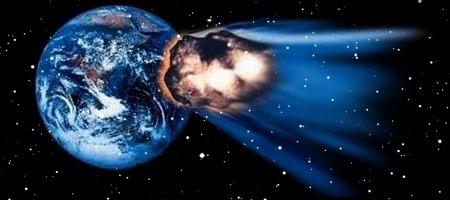

Osiris-Rex will travel to asteroid Bennu, collect ground samples, then haul them back to Earth. A United Launch Alliance Atlas V rocket carrying the OSIRIS-REx spacecraft lifts off from the Cape Canaveral Air Force Station on Sept.

The good news is that we’re getting better at finding them - but we’re still unprepared if one does make its way to Earth. They enter our atmosphere as meteors, where many blow up in mid-air some make their way to the ground or sea. Luckily for us, asteroids the size of Bennu, and giant asteroids like the one that helped kill the dinosaurs 65 million years ago, don’t cross Earth’s path often. But the real damage would come from the air burst, caused by the meteor hurtling through the atmosphere, which could collapse buildings and tear down trees up to 30 miles away.

It would trigger a 6.7-magnitude earthquake. Locations three miles away would be buried under 50 feet of rock raining down. The impact would excavate a crater nearly three miles wide and 1,500 feet deep. Now, scientists estimate that the asteroid’s orbit is elongated, extending that single orbit of the sun to 425 days.Related: Space Mining: The Intergalactic Gold Rush Is On “In fact, this is one of the closest approaches by a known near-Earth object ever recorded.”Įarth’s gravity changes the trajectory of asteroids, but 2023 BU came so close to our planet that its orbit around the sun changed after the encounter.īefore Thursday’s close pass, the asteroid had a circular orbit that took about 359 days to complete around the sun. “Scout quickly ruled out 2023 BU as an impactor, but despite the very few observations, it was nonetheless able to predict that the asteroid would make an extraordinarily close approach with Earth,” said Davide Farnocchia, a navigation engineer at JPL who developed Scout, in a statement. The Center for Near Earth Object Studies, located at the Jet Propulsion Laboratory in Pasadena, California, calculates the trajectory of all known near-Earth asteroids to assess their potential impact on our planet. 'Planet killer' asteroid spotted hiding in the sun's glare The Scout impact hazard assessment system at NASA’s Center for Near Earth Object Studies analyzed the data from the Minor Planet Center and predicted that the asteroid would miss Earth.Īrtist's impression of an asteroid that orbits closer to the Sun than Earth's orbit NSF's NOIRLab/DOE/FNAL/DECam/CTIO/NOIRLab Observatories around the world made further observations after the discovery’s announcement Sunday, allowing for precise refining of 2023 BU’s orbit. Under the auspices of the International Astronomical Union, the organization is responsible for the identification, designation and orbital data for such celestial objects. Once enough observations were registered, the center announced the discovery of the asteroid. The Minor Planet Center, which tracks the positions of minor planets, comets and space rocks, also received recent reports of observations of the asteroid 2023 BU. Borisov had previously discovered the interstellar comet 2I/Borisov in 2019. NASA/JPL/CaltechĪmateur astronomer Gennadiy Borisov spotted the asteroid from the MARGO observatory in Nauchnyi, Crimea, on Saturday. A NASA graphic shows the orbital path of asteroid 2023 BU in red as it makes a close approach of Earth.


 0 kommentar(er)
0 kommentar(er)
